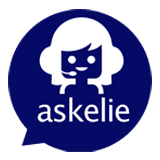From Paper Trails to Digital Workflows: Improving Process, Accuracy and Efficiency
Purchase ledger automation with AI and OCR is transforming the way finance teams manage accounts payable. The purchase ledger has always been the backbone of financial operations, but traditional processes are manual, slow, and error-prone. Yet in many organisations this important function is still heavily manual. Paper invoices arrive in the post, PDFs land in inboxes, and skilled finance staff spend hours entering data instead of focusing on higher value work. The result is delays, errors, and missed opportunities.
With purchase ledger automation powered by Artificial Intelligence (AI) and Optical Character Recognition (OCR), accounts payable can now move away from paper-driven processes and embrace digital finance transformation.
Traditional Challenges in the Purchase Ledger
Accounts payable teams face common difficulties including:
- Manual data entry and duplication of work
- Limited visibility of invoices until late in the process
- Delays in approvals leading to late payments
- Errors in coding or matching to purchase orders
- Duplicate or missed invoices
These challenges waste time, frustrate suppliers, and create compliance risks. Finance leaders are left with poor visibility of liabilities and weak cashflow forecasting.
The AI and OCR Advantage in Accounts Payable
AI and OCR in accounts payable allow finance teams to work faster and more accurately.
- OCR technology scans invoices in paper or digital form and extracts key data such as supplier name, invoice number, PO reference, line items and VAT.
- AI applies business logic to categorise and code invoices, match them with purchase orders, and flag exceptions. It learns from past actions to improve accuracy over time.
- Automated workflows instantly route invoices to the correct approver with reminders to keep things moving.
This means faster invoice processing, fewer errors, and better visibility of spend. Purchase ledger automation is not about replacing people, it is about freeing teams from repetitive admin so they can focus on supplier management, spend analysis, and supporting financial decision making.
What Purchase Ledger Automation Delivers
Organisations that use AI and OCR in accounts payable achieve results such as:
- Up to 80 per cent less manual data entry
- Faster invoice turnaround with more early payment discounts captured
- Improved accuracy with fewer supplier queries
- Real time dashboards of liabilities and overdue items
- Stronger audit trails and less risk of fraud or duplicate payments
For example, a UK-based services company reduced invoice processing times from 14 days to 3 by introducing purchase ledger automation. The finance team gained instant visibility of supplier spend and captured early payment discounts that had previously been missed.
Compliance and Audit Benefits
Purchase ledger automation also strengthens compliance. Every invoice is logged, every approval recorded, and every exception flagged. This improves audit readiness, ensures VAT accuracy, and reduces the chance of fraud slipping through. In regulated industries such as healthcare, financial services, and government these benefits are as important as the efficiency gains.
Finance Teams Moving Up the Value Chain
AI and OCR in accounts payable give finance staff more time for strategic work. Teams can shift focus from data entry to supplier performance analysis, contract negotiations, and financial forecasting. This change transforms the purchase ledger from a back-office process to a valuable source of intelligence.
Getting Started with AI and OCR
Adopting purchase ledger automation does not require a major system overhaul. Many solutions integrate directly with finance systems such as Xero, Sage, NetSuite, or SAP. The best approach is to begin with one area, such as invoice intake or purchase order matching, and expand gradually.
Steps to start include:
- Map current invoice processes and highlight bottlenecks.
- Select a solution that integrates with your existing systems.
- Involve your purchase ledger team in shaping the automation.
- Measure impact with clear metrics such as cycle time and error rate.
Traditional principles of finance such as reconciliation and control remain essential. With AI and OCR they can be achieved with more speed, accuracy, and transparency.
The Future of the Purchase Ledger
AI and OCR are now essential tools for organisations aiming to modernise their finance function. Purchase ledger automation reduces costs, improves supplier relationships, and strengthens compliance while giving finance teams the data they need to operate strategically.
The purchase ledger is moving from spreadsheets and scanners to a smarter digital-first model. Organisations that embrace this change will run leaner operations and gain the financial agility required in today’s marketplace.



Comments are closed